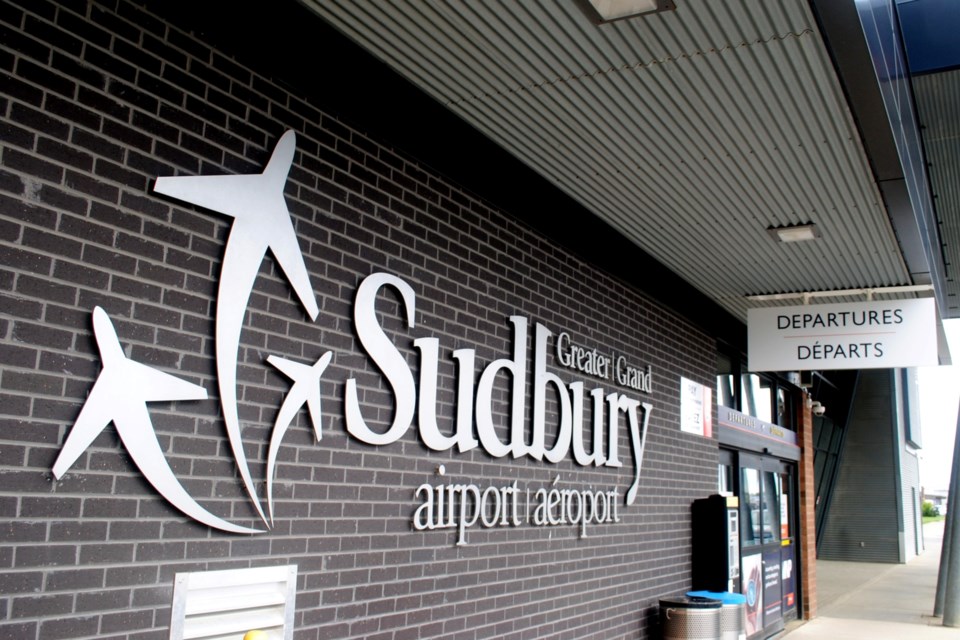Passenger traffic at the Greater Sudbury Airport is hovering around roughly half its pre-COVID levels, but is still greater than at any point since the pandemic grounded most travellers in 2020.
“We’ve definitely seen the numbers go up,” said Jean-Mathieu Chénier, the airport’s manager of Marketing, Airport Excellence and Innovation.
“You can feel it in the air as you walk through the terminals. … It’s nice to see people come through here again and want to travel here again.”
In May, the airport saw approximately 11,000 passengers come through their doors, which marks the busiest COVID-era month yet. This far outweighed May 2020, when they welcomed fewer than 400 passengers. During 2020, their overall passenger volume dropped by 72 per cent compared to the previous year.
Last year saw passenger traffic continue to hover around 30 per cent of the airport’s 2019 volume. Things dipped at the start of 2022, but have since increased to approximately 50 per cent of pre-pandemic passenger volume and appear to be in recovery, Chénier said.
“We’re cautiously optimistic that we’re getting out of this.”
Along with a spike in passenger numbers has come growing pains throughout the airline industry, particularly at larger centres such as Pearson International Airport in Toronto, which has seen significant delays in recent weeks.
Although the Greater Sudbury Airport had to make numerous adjustments to remain in the financial black throughout the pandemic, which included not filling vacated positions as quickly as they might otherwise, they’re a tighter operation with less leeway in expenses than some of the larger airports.
Most of the local airport’s costs are fixed, Chénier said, noting as an example that runways need to be cleared of snow regardless of how many aircraft are using them.
Places such as Pearson International Airport saw layoffs take place throughout the pandemic, which Chénier said they’re likely to refill as traffic volumes allow. For now, they’re in an adjustment period which has brought trickle-down impacts to the local airport, resulting in some flight cancellations.
“There are a few growing pains right now as the industry ramps back up, and those labour force issues are across the board,” he said.
Airports such as Pearson “might not have the crew to handle all the flights that are coming in,” he explained. “If you’re an airline, do you prioritize the triple-seven that’s got 400 people on it, or do you prioritize the small aircraft that has maybe 40 people on it?”
With the Greater Sudbury Airport considered a feeder airport for larger centres, they’re typically left out of the equation in scenarios such as this.
The federal government recently announced their vaccine mandate will lift on June 20, which will allow those staff members who declined COVID-19 vaccines to return to work, which Chénier said will free up more staff. At the same time, air travel will open to the unvaccinated. In Ontario, approximately nine per cent of people aged 12 and older are not fully vaccinated.
Although the federal vaccine mandate is lifting, Chénier cautioned other jurisdictions’ mandates might remain in place and travellers should be aware of the rules of their destination before leaving home.
The local airport lifted its mask mandate on Wednesday, which applies to the terminal area, but not the federally mandated sections of the airport, where masks are still required. This includes screening and boarding areas, as well as inside aircraft.
As things ramp back up, Chénier said that people should remain patient, particularly as it relates to the overworked people working at certain airports that are currently understaffed.
“They’re doing their best to try and get you to your destination, they really are,” he said, adding that some people have been quick to anger in relation to COVID-related mandates, with local security guards getting “verbally abused on a daily basis” by people refusing to wear masks.
Chénier encourages travellers to arrive early whenever possible and to keep all of their essential items, such as medication, with them in their carry-on luggage.
The local airport remains in good financial health thanks to various cost-cutting measures and federal support. Although they increased their borrowing capacity with the City of Greater Sudbury during the pandemic from $7.5 million to $12.5 million as a precaution, the amount they owe the city now is currently slightly less than the $2.5 million they owed prior to the pandemic.
“We’re coming out of the pandemic the same or a little better than we did from a borrowing perspective,” Chénier said, clarifying that the money they borrow from the city is paid back with interest, “so we’re not on the tax base in any way, shape or form.”
One of their goals as travellers return to the airport will be finding an operator for their restaurant, which has been vacant since the pandemic started. In the meantime, they’re also looking to enhance their vending machine options so passengers have something to eat.
The frequency of flights is up slightly, though Chénier said this is likely to ramp up slowly as airlines wait for their existing aircraft to fill with passengers.
Tyler Clarke covers city hall and political affairs for Sudbury.com.
